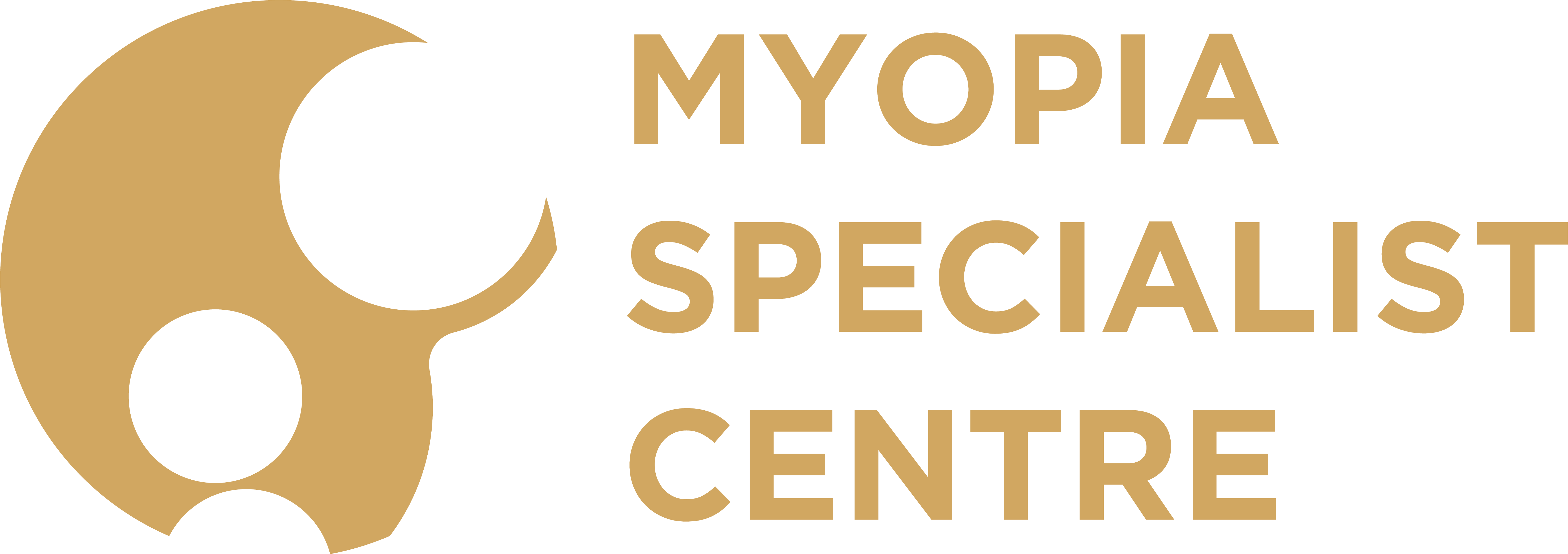
About the Author
Written by Optometrist Megan Lafferty, contact us to book an appointment with Megan.
In a world dominated by screens and constant visual stimuli, the prevalence of myopia, or nearsightedness, has been on the rise1. Myopia not only impacts the clarity of vision but also poses long-term risks to the health of the eyes as sight threatening diseases are more likely to occur2. This article aims to provide a comprehensive exploration of the myopia management strategies available today, shedding light on innovative approaches and holistic practices that go beyond conventional methods.
Understanding Myopia
Before delving into management strategies, it’s crucial to understand what myopia is, why it occurs and why we aim to prevent it in the first place:
Myopia is a refractive error of the eye which causes distant objects to appear blurry, often caused by the elongation or excess curvature of the eyeball. Genetics, environmental factors, and prolonged near work all contribute to its development3.
Having myopia puts us more at risk of developing potentially sight threatening conditions such as glaucoma, retinal detachment and macular degeneration2. The risks increase as an individual’s degree increases, meaning people with high levels of myopia (e.g. greater than -5.00D) are much more at risk than those with low myopia, however even low myopes are more at risk of developing these conditions than those without myopia at all!4 Due to this fact, some label myopia as a “disease”5 rather than simply a refractive error and thus believe we should prevent ANY myopia in our children or at the very least ensure that it does not progress to high degrees. The main aim of myopia control methods is to slow or stop the excessive lengthening of the eyeball6.
Innovative Technologies 6,7
Let’s look at the myopia control methods used today:
Orthokeratology (Ortho-K)
Ortho-K is a non-surgical procedure which involves wearing specially designed contact lenses overnight. These lenses reshape the cornea temporarily, providing clear vision during the day without the need for glasses or soft contact lenses. Ortho-K has gained popularity for its ability to slow down myopia progression.
Eyedrops
The use of Atropine Eye Drops has now been widely adopted for myopia control in many countries as studies have shown promise in its ability to slow myopia progression in children.8 It’s crucial to use them under professional supervision and guidance.
Spectacle Lenses
Modern spectacle lenses are being designed to manage myopia. These lenses aim to control the way light enters the eye, potentially inhibiting myopia progression without the need for contact lens wear or eyedrop installation.
Soft Contact Lenses
Myopia control soft contact lenses work similarly to myopia control spectacle lenses whereby the degree is adjusted on certain areas of the lens to control the way light enters the eye and thus slow the growth of the eyeball. They are worn during the day.
Holistic Approaches6,7
Specially designed lens technology and pharmacological interventions are not the only option for myopia control. By adopting good visual care habits this has also shown to have some effect on slowing myopia progression:
Less Near Work
Too much time spent doing close vision tasks can significantly impact myopia progression. Taking regular breaks from near work such as implementing the 20-20-20 rule (taking a 20-second break every 20 minutes, looking at something 20 feet away) and maintaining an appropriate working distance from screens are simple yet effective practices.
More Outdoor Time
Encouraging outdoor activities has proven to be an effective strategy for myopia management. It is thought that the exposure to natural light and distant visual stimuli can help in slowing down the progression of myopia so it is especially important for kids to play outdoors more.
The Role of Eye Care Professionals
Not all patients are suited to all methods of myopia control which is why it’s necessary to consult an eye care professional (ECP) such as Optometrists and Ophthalmologists before undertaking any treatment. Regular eye examinations, personalised treatment plans, and close monitoring of eye health and vision contribute to effective myopia control. Engaging in discussions with your ECP about lifestyle, screen time, and any concerns related to vision is essential for proactive management.
Conclusion
As the prevalence of myopia continues to rise, understanding the available management options becomes imperative. By combining lifestyle adjustments, innovative technologies, and professional guidance, individuals can take proactive steps toward preserving their vision. Myopia management is not just about seeing clearly today but ensuring the health of the eyes and vision for the future. Being adequately informed and embracing these strategies can pave the way for a world where eye health and clear vision is a shared and sustainable reality.
If you would like to find out more about our myopia control packages please click here.
References:
- B. A .Holden, T. R. Fricke, D. A. Wilson, M. Jong, K. S. Naidoo, P. Sankaridurg, T. Y. Wong, T. J. Naduvilath, S. Resnikoff. Global Prevalence of Myopia and High Myopia and Temporal Trends from 2000 through 2050. Epub (2016) doi:10.1016/j.ophtha.2016.01.006 (https://pubmed.ncbi.nlm.nih.gov/26875007/)
- S. M. Saw, G. Gazzard, E. C. Shih-Yen, W. H. Chua. Myopia and associated pathological complications. Ophthalmic Physiol Opt. (2005). doi:10.1111/o.1475-1313.2005.00298.x (https://pubmed.ncbi.nlm.nih.gov/16101943/)
- J. Cooper & A. V. Tkatchenko. A Review of Current Concepts of the Etiology and Treatment of Myopia. Eye Contact Lens (2018) doi:10.1097/ICL.0000000000000499 (https://www.ncbi.nlm.nih.gov/pmc/articles/PMC6023584/)
- A. E. G. Haarman, C. A. Enthoven, J. W. L. Tideman, M. S. Tedja, V. J. M. Verhoeven and C. C. W. Klaver. The Complications of Myopia: A Review and Meta-Analysis . IOVS (2020) doi:10.1167/iovs.61.4.49 (https://www.ncbi.nlm.nih.gov/pmc/articles/PMC7401976/)
- C. Y. Leonard. Is Myopia A Disease or Not?. Review of Ophthalmology (2022) (https://www.reviewofophthalmology.com/article/is-myopia-a-disease-or-not)
- J. Cooper & A. V. Tkatchenko. A Review of Current Concepts of the Etiology and Treatment of Myopia. Eye Contact Lens (2018) doi:10.1097/ICL.0000000000000499 (https://www.ncbi.nlm.nih.gov/pmc/articles/PMC6023584/)
- A. Russo, A. Boldini, D. Romano, G. Mazza, S.Bignotti, F. Morescalchi and F. Semeraro. Myopia: Mechanisms and Strategies to Slow Down Its Progression. J Ophthalmol (2022). doi:10.1155/2022/1004977 (https://www.ncbi.nlm.nih.gov/pmc/articles/PMC9213207/)
- W. Chua; V. Balakrishnan; D. Tan; Y. Chan; ATOM Study Group. Efficacy Results from the Atropine in the Treatment of Myopia (ATOM) Study. IOVS (2003). https://iovs.arvojournals.org/article.aspx?articleid=2414925





